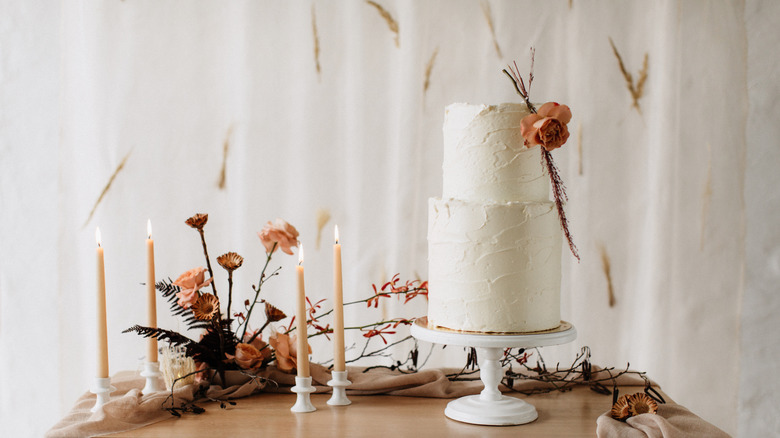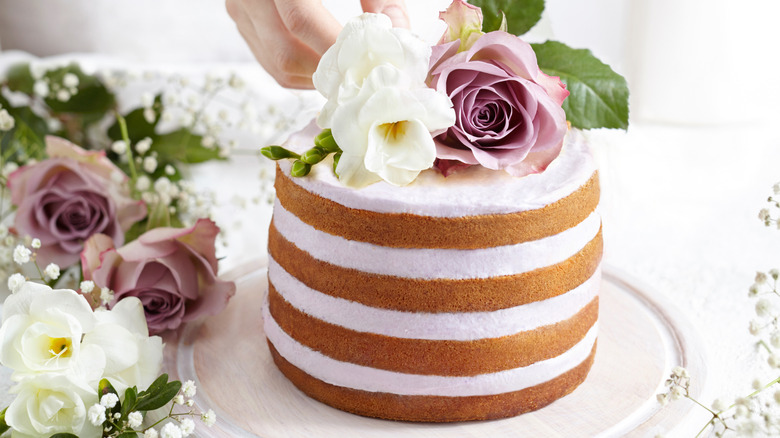The Victorian-Era Symbolism Behind White-Frosted Wedding Cakes
The institution of marriage is an old one, full of life-long vows, long-standing traditions, and a long line of in-laws you'll probably never see again. The wedding cake is one such tradition that has come to be an integral part of every classic wedding in the United States. A big towering white cake for the bride and groom to cut and for the guests to enjoy, but when did this tradition start? And why white? Why not blue, black, or orange?
The white coloring for wedding cakes first appeared in England during the 18th century and really gained widespread prominence during the mid- to late-19th century during the Victorian era (a time in British history defined by the reign of Queen Victoria), per Gastronomica. The stark white of wedding cakes (and also of all the other white hues in most weddings) represented the purity of the bride and of the ceremony, but there was actually a more realistic reason for the many shades of white.
The price of sugar these days
According to the Smithsonian Magazine, England had an abundance of sugar by the 16th century, but the level of refinement varied. The more refined and pure the sugar, the whiter, rarer, and therefore more expensive it was. It was more than the color white representing some overarching meaning. The whiteness of sugar and of the confections was used as a status symbol for those wealthy enough to shell out the money for the purest sugar.
By the time of Queen Victoria's wedding to Prince Albert in 1840, bigger and whiter cakes were all the rage and of course, the royal wedding featured an enormous white cake that stood 14 inches tall, 10 feet across, and a whopping 300 pounds; every inch decorated top to bottom with ornately designed white icing and cream, per National Geographic. As both a status symbol and just a statement piece, huge white cakes at weddings owe their light shades not so much to the purity of the bride and groom, but to the expense of processing the sugar.

